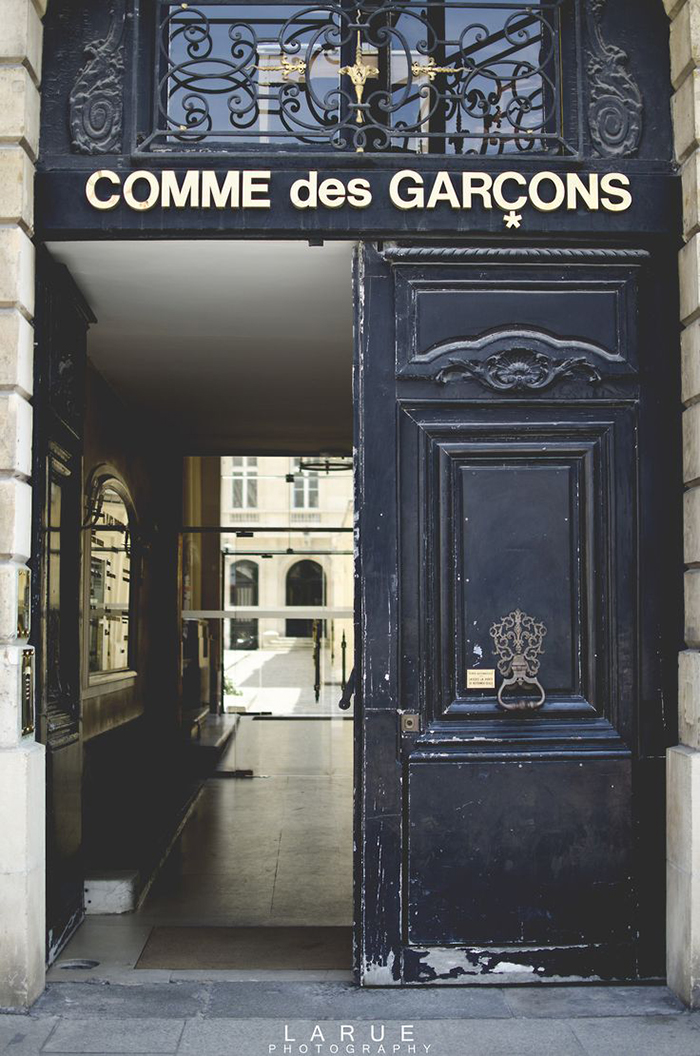Comme Des Garçones

Comme des Garçons was founded in 1973 by Japanese artist and stylist, Rei Kawakubo. The company is known for anti-fashion, with beautiful textiles in crisp deconstructed cuts often with frayed raw edges and voluminous fabrics enveloping the body. Kawakubo is as much a graphic designer as she is a stylist, artist, interior designer and fashion designer. The reclusive designer considers every aspect of the presentation and the product from the Paris runway, to boutiques throughout the world. She is an inspiration to fashion designers young and old and to artists of all mediums. There is a precision to her work and the Comme des Garçon brand that raises the bar in fashion and design and pushes others to always strive for the highest level of quality in all aspects of our work and life. — angela
Read the full interview with Rei Kawakubo here, copyrighted to Interview Magazine.

RONNIE COOKE-NEWHOUSE: Journalists sometimes describe you as intellectual, ascribing to you a kind of rigorous, cerebral approach to fashion. Is there another way you would describe yourself?
REI KAWAKUBO: I am not conscious of any intellectual approach as such. My approach is simple. It is nothing other than what I am thinking at the time I make each piece of clothing, whether I think it is strong and beautiful. The result is something that other people decide.
RCN: Next year the company will be 40 years old. When you started, you did so to be a free and independent woman in Japan. How do you remain free?
RK: In terms of creation, I have never thought of suiting any system or abiding by any rules—either a long time ago or right now. In this respect I have remained free. The necessity has grown, as we have gotten bigger, to think about commercial aspects of the business more and more, because of the responsibility we have toward our staff and our factories.
RCN: Does the deadline of having to show a collection a few times a year help or hinder your creative process?
RK: Since we are in the business of fashion, deadlines are normal. I can’t say if they help or hinder me.
RCN: What is so important about being new? Does creation have to be new?
RK: Creation takes things forward. Without anything new there is no progress. Creation equals new.
RCN: Why do you always go back to black?
RK: I have always liked black. However, recently black has become as habitual as denim, so I wanted to find tomorrow’s black.
RCN: How do you balance art and commerce and still remain free.
RK: Feeling free inside oneself is being free.
RCN: Is there something hopelessly bourgeois about being an artist? Do you escape that by making something utilitarian, even if it is described as art?
RK: It is not in order to escape. There is surely worth in making simple things, and there is worth when utility is the concept. But art need not be bourgeois, necessarily. There is nothing bourgeois, for example, about hair artist Julien d’Ys great creation for this collection, where hair, hat, and makeup become one.
RCN: Fashion has become a big business, dominated by large corporate enterprises, like LVMH and the Gucci Group. You collaborate with this world, as you recently did with Louis Vuitton, but you also hold yourself completely apart from it. What is your attitude toward the dominance of fashion by these corporate entities?
RK: There’s no deep meaning. It’s just business. But even with business methods and ideas, it is necessary to have something new.